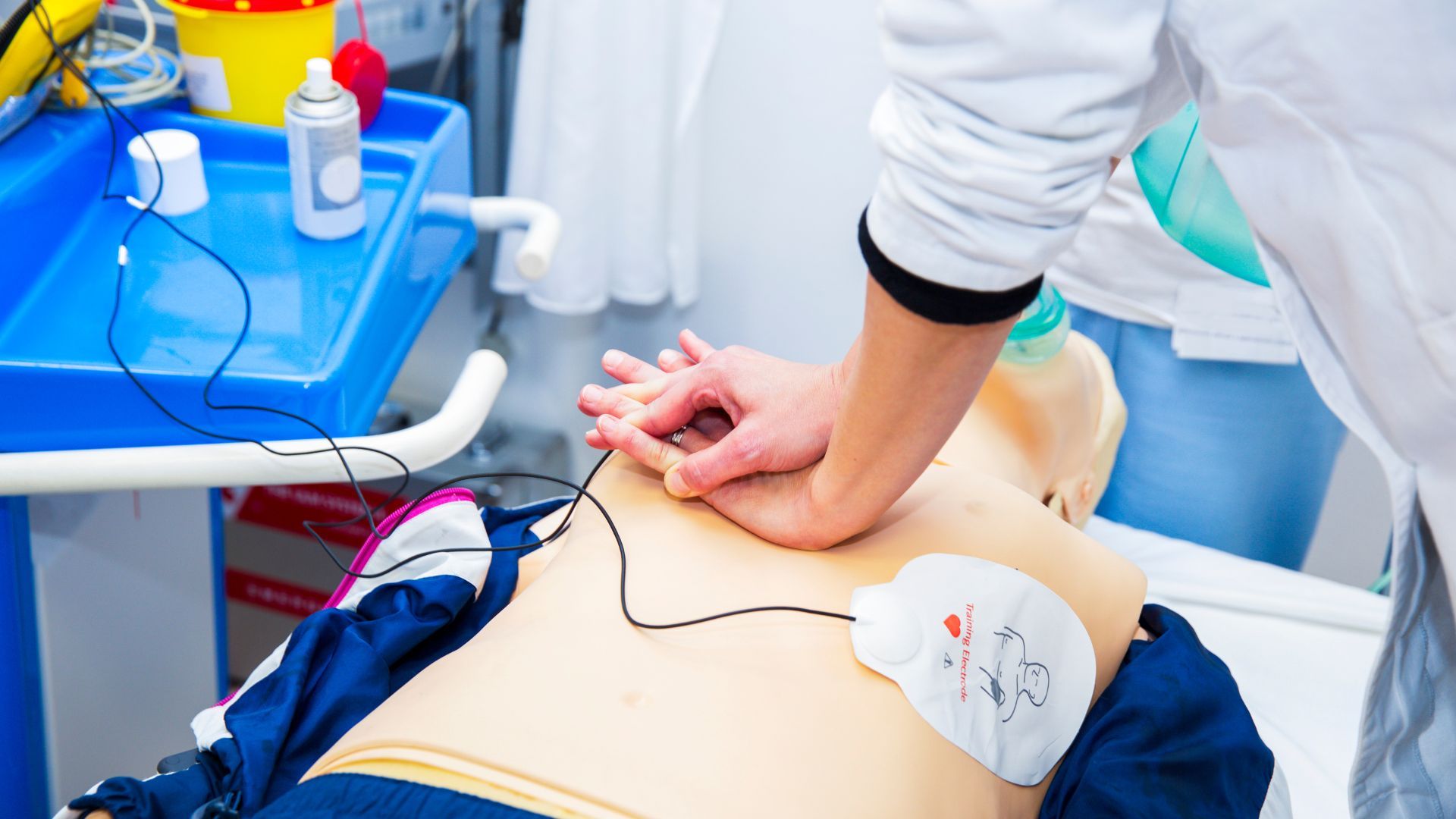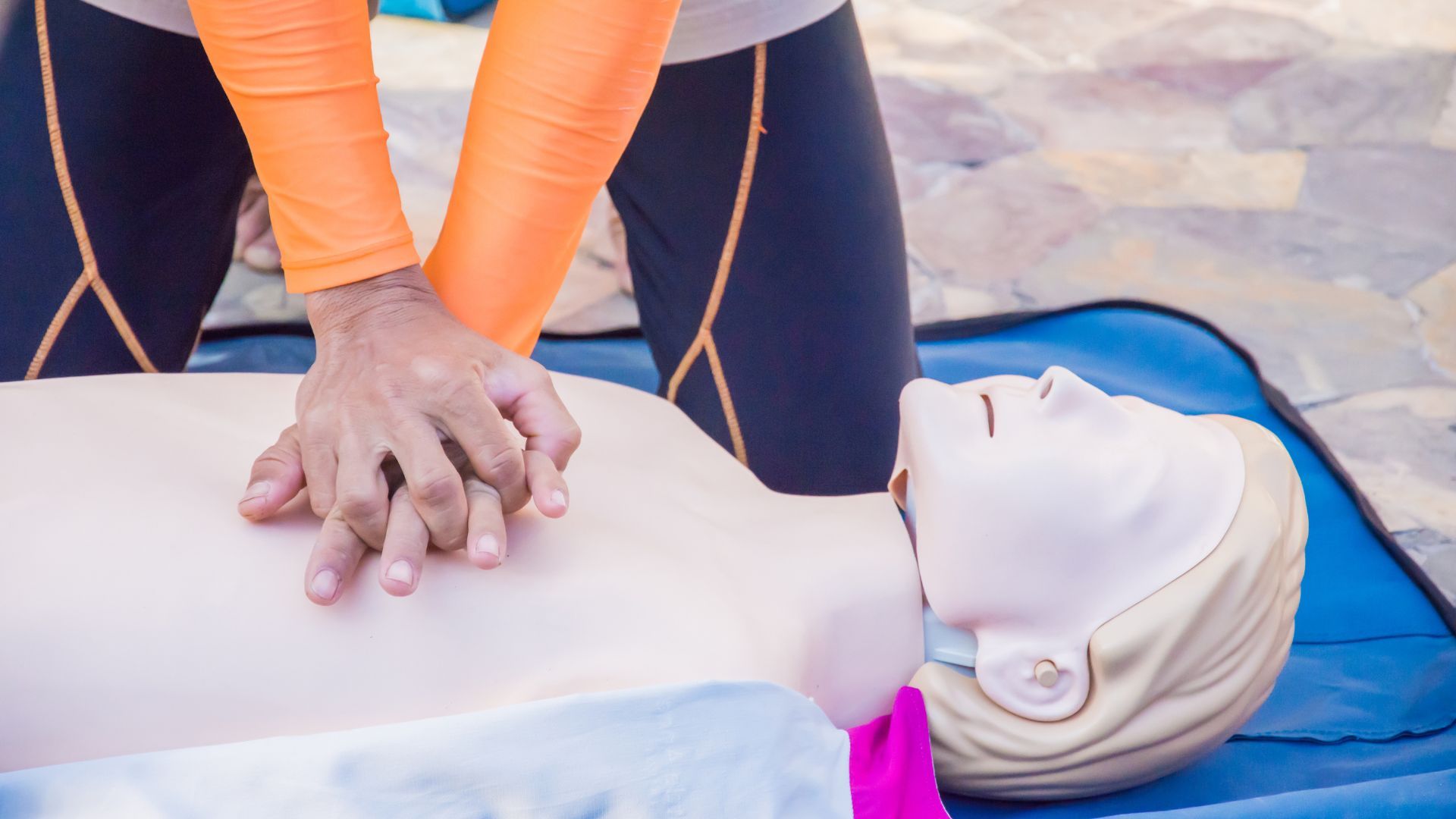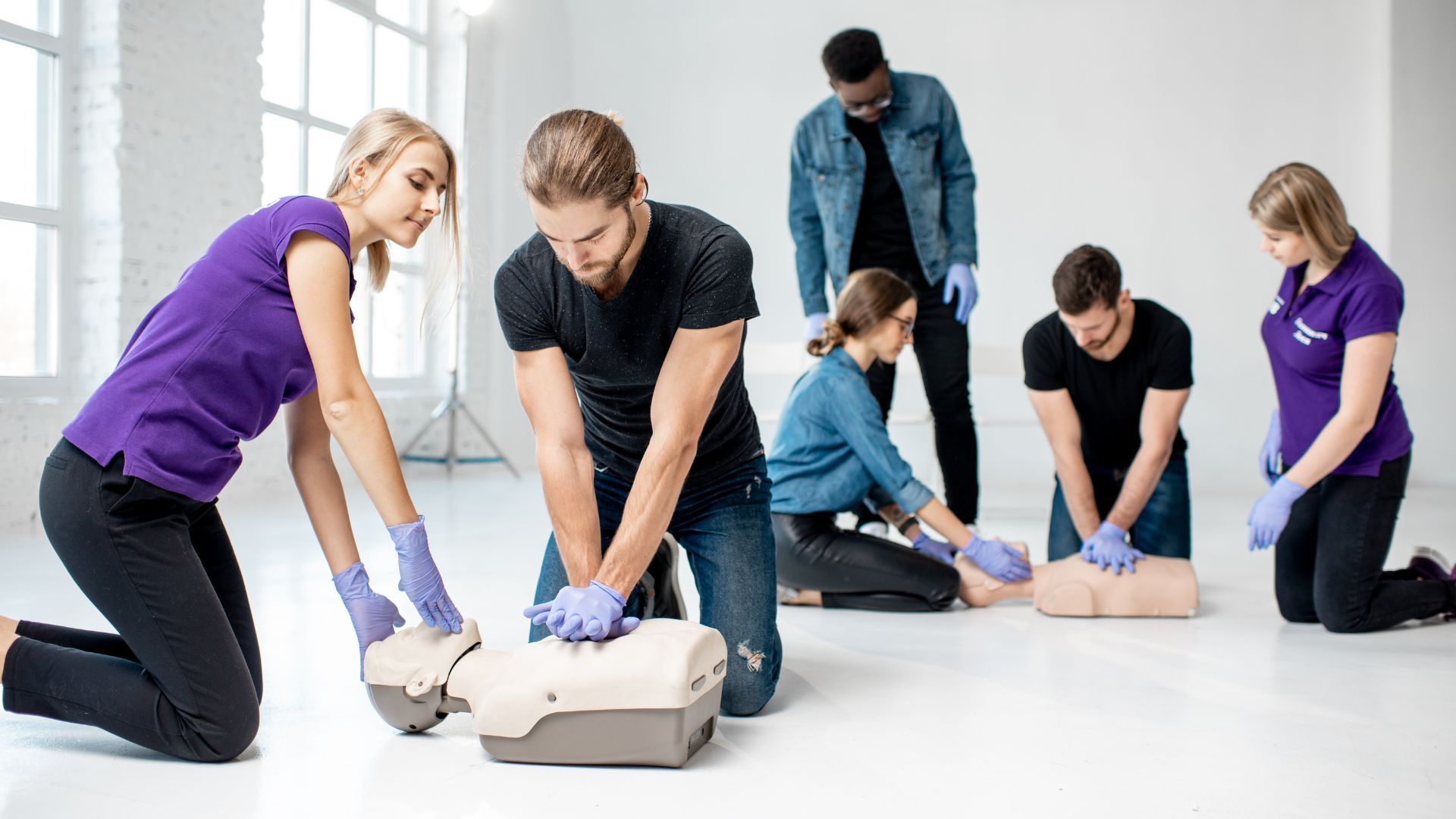
Common Misconceptions About CPR Certification
When it comes to CPR certification, there are a lot of misconceptions out there. From people believing that a one-time class is enough for lifelong training to thinking that the same certification applies in all states, these misunderstandings can lead to serious consequences if not addressed. I’m here to set the record straight and provide you with an accurate understanding of what CPR certification entails.
First off, let’s clear up this notion that once you’ve taken a course and received your certificate, you don’t need any further training or education on the subject matter. That couldn’t be farther from the truth! The American Heart Association (AHA) recommends recertification every two years to ensure your skills remain sharp. This doesn’t mean taking another full course either; online refresher courses are available so you can keep up with changes in protocol without having to commit too much time.
Finally, CPR certifications aren’t necessarily recognized across state lines. While most states accept AHA credentials as valid, others may require additional testing before approving them – check with your local regulations first before assuming your card will work everywhere else! With this knowledge in hand, now you have everything you need to navigate through these common misconceptions about CPR certification – and stay safe while doing it!
Definition Of CPR
Ah, CPR – the magical three-letter word that everyone believes will automatically save lives. All you have to do is learn a few steps and you can bring someone back from death! Well, not quite… In reality, there’s much more to it than that.
Contrary to popular belief, obtaining certification in cardiopulmonary resuscitation (CPR) doesn’t actually mean one has achieved medical expertise. It simply means they know how to perform the lifesaving procedure correctly if needed. Becoming certified does require some knowledge of basic anatomy and an understanding of emergency techniques but it’s no substitute for actual medical training.
So what is CPR exactly? Simply put, it is chest compressions combined with rescue breathing used on a person who isn’t getting enough oxygen into their system due to cardiac arrest or other circumstances. The procedure helps keep blood circulating throughout the body while buy time until professional help arrives.
Benefits Of Certification
Transition: Knowing the ins and outs of CPR is essential, but being certified in it can provide many additional benefits.
CPR certification comes with a lot of perks that may not be common knowledge. Having a CPR certification means you are equipped to help someone if they experience cardiac arrest or need other medical assistance. People who have this type of training know how to assess situations quickly and respond accordingly. It also gives them access to job opportunities in industries such as healthcare and emergency services. Here are five key advantages of having your CPR certification:
- You will gain confidence when faced with an emergency situation;
- You’ll learn techniques on how to save lives;
- You could get preferred hiring status for certain jobs;
- You will stay current with trends within the development of emergency procedures;
- You’ll develop skills that can benefit yourself and others in times of crisis.
As seen, there are many advantages associated with becoming certified in CPR. In addition to providing protection for family members and friends, certifying oneself in CPR can open doors to new career prospects and allow individuals to obtain more knowledge about how to react appropriately during life-threatening scenarios.
Limitations Of Certification
Knowing the benefits of CPR certification can be reassuring and uplifting. However, it is important to understand its limitations as well.
One interesting statistic that may evoke emotion in the audience is this – only 4% of individuals who die from cardiac arrest receive bystander-initiated CPR1. Even if someone has obtained a CPR certification, there are several limiting factors when attempting to provide help in an emergency situation.
The first limitation of having a certified qualification pertains to knowledge retention; for example, due to the fact that many certifications require renewal every two years2, one must continually update their skills or else they could forget how to perform certain techniques3. Furthermore, even after obtaining a certificate, there are still legal restrictions on what type of help you can offer4; thus depending on the circumstance, your abilities might not be applicable5. Lastly, providing CPR carries with it potential risks such as contracting infections6 or being liable for any mistakes7; therefore careful consideration should always go into deciding whether or not you want to step up and assist8.
Although some people might be hesitant about helping because of these reasons9, learning essential life saving tactics like cardiopulmonary resuscitation (CPR) can give you peace of mind10 and make you feel better prepared11 should an unfortunate event occur12. Taking time out13 of your day14 to learn15 lifesaving methods16 will certainly pay off17 in the long run18!
Training Requirements
Transitioning from the previous section, it is important to understand that CPR certification does not come without a few caveats. Many people believe that once they receive their certification, they are done and do not need to complete any additional training. However, this is far from true. In order for a person to remain certified in CPR, they must complete periodic refresher courses as well as stay up-to-date on new techniques and changes in protocol:
- Periodic Refresher Courses: To maintain certifications, individuals must renew them every two years by completing an approved renewal course. This ensures everyone remains knowledgeable about the latest standards of care and can accurately provide life support if called upon.
- Staying Up-to-Date: It’s imperative to stay informed about changes in protocols or techniques so one can always act with confidence when providing life support services. A great way to keep current is attending conferences or workshops related to CPR topics; online education sites also offer excellent opportunities for continuing education credits. Additionally, many organizations have internal newsletters which may include updates on recent advances in resuscitation science or protocols used by providers across the world.
- Training Requirements: Depending on where someone works, there may be specific requirements for how often employees must take part in practice drills or simulations so skills stay sharp. If a job requires performing rescues in high risk areas such as water rescue operations, first responders will usually be required to participate in more frequent drills than what would be considered standard practice at other rescue locations like schools or office buildings.
In short, despite having earned a CPR certification, staying knowledgeable and prepared means regularly refreshing knowledge through formalized learning sessions as well as remaining aware of advances within the field of resuscitation science and technology. By doing this we can ensure our own safety while helping those who need us most.
Types Of Courses Offered
CPR certification courses come in many different shapes and sizes, like a variety of puzzle pieces. Depending on the individual’s needs, they can choose from basic, advanced or specialized classes. Basic CPR classes focus on providing essential skills so individuals can provide immediate assistance to someone who is choking or suffering cardiac arrest. Advanced classes offer more detailed instruction that helps participants better understand how to respond in emergency situations. Finally, specialized classes are tailored for specific professions such as healthcare professionals or first responders.
Each course aims to teach students how to recognize signs of distress and administer proper care while keeping safety at the forefront of their actions. Participants will also learn about infection control and other related topics through lectures, hands-on practice with manikins and videos demonstrating real-life scenarios. At the end of all courses, successful completion earns them a certificate showing they have met all requirements for certification.
Overall, it’s important for an individual to find the right type of CPR class that meets their particular needs when seeking certification. With a wide range of options available, there should be something suitable for everyone who wants this crucial knowledge and lifesaving skill set.
Certification Expiration
Many people think that CPR certification is a one-time thing. They assume once they’ve gotten the certification, it’s good forever. Unfortunately, this isn’t true. All CPR certifications have an expiration date, usually between one and two years after initial certification. This means that if you don’t renew your certification before it expires, you’ll need to take the course again in order to renew it.
It’s important to remember that even though your CPR certificate may be valid for up to two years, there are still regular refresher courses available every year or so to keep your skills current and up-to-date with any changes in safety regulations or techniques. Taking these refreshers will help ensure that when you do eventually need to use CPR, you know exactly what to do and how best to do it.
Staying on top of your CPR training can help save lives! Make sure you check when your certificate expires and plan accordingly so you never miss out on valuable opportunities for learning and staying up-to-date on the latest methods in life saving procedures.
Cost Considerations
One of the common misconceptions about CPR certification is that it will be expensive. This could not be further from the truth! The cost for a CPR class and certifications can vary, but in most cases you can expect to pay anywhere between $30-$80 depending on where you take the course. In addition, many employers offer free or discounted classes to their employees as part of their employee benefits package. Here are 4 other ways to save money when taking a CPR certification course:
- Look for discounts online – Many companies who offer training programs advertise special offers like discounts or bundles with multiple courses available at once.
- Check with professional organizations – Professional organizations such as medical associations often provide discounted rates for members looking to become certified in CPR.
- Earn college credits – Depending on your school, some schools may offer credit towards your degree if you have taken an accredited CPR certification class.
- Try out community-based courses – Community-based courses such as those offered by the Red Cross offer reduced pricing compared to private instruction, and they often accept donations instead of charging a fee outright.
Overall, there are plenty of options available to make sure that you get certified without breaking the bank! With all these tips in mind, becoming certified in CPR does not have to break the budget – it can actually be quite affordable!
Conclusion
In conclusion, CPR certification is an important life-saving skill that many people should know. Misconceptions about it can lead to confusion and misunderstandings, so it’s essential to be aware of the facts. First, you don’t need a mandatory certification in order to perform CPR; however, taking a course will help ensure that you are properly trained on how to use this technique effectively. Second, while success rates vary depending upon age and other factors, CPR can still be effective for all ages in certain situations. Lastly, there are both online courses as well as international certifications available for those who wish to learn more about performing CPR safely.
My hope is that by understanding these common misconceptions about CPR certification, people will feel empowered to take the necessary steps towards becoming certified and potentially saving lives with their knowledge and skills. With proper training and practice comes confidence – confident enough for anyone to make a difference if ever faced with a medical emergency situation requiring immediate attention. So go ahead: break down barriers of misconception and acquire the tools needed to become certified in CPR!
Frequently Asked Questions
Is CPR Certification Mandatory?
Do you ever wonder if becoming CPR certified is necessary? Is it worth your time and money to become CPR certified? These are valid questions. We will explore these queries in more depth, so that we can make an informed decision about whether or not to pursue this certification.
Firstly, let’s look at the legalities of becoming CPR certified: In many countries, having your CPR certification is mandatory for certain types of jobs such as being a nurse or paramedic. However, even if you do not work in one of those professions, it is still beneficial to have this qualification under your belt. It shows potential employers that you are committed and willing to learn new skills. Furthermore, some states require all teachers and school staff members to be CPR trained.
It is also important to consider the safety benefits associated with receiving CPR training. Knowing how to perform lifesaving techniques like chest compressions and rescue breathing can mean the difference between life and death during emergency situations – especially when medical help may take too long arrive on the scene. On top of that, having basic knowledge about first aid procedures can put us in a better position to handle any sort of accident or injury that might occur around us.
All things considered, taking up a course in CPR certification could prove invaluable for both our career prospects as well as our general safety awareness – making it well worth considering for anyone looking into qualifications they can add onto their resume..
What Is The Success Rate Of CPR?
Have you ever wondered what the success rate of CPR is? You may have heard stories or seen movies where someone receives CPR and then miraculously comes back to life. But, in reality, how successful is it really? To understand the answer to this question, let’s take a closer look at the facts.
The key thing to know about CPR is that it is designed for emergency situations only. It can help increase the chance of survival when performed correctly and promptly after sudden cardiac arrest has occurred. The actual success rate depends on several factors such as how quickly CPR was initiated, whether an automated external defibrillator (AED) was used, and any underlying medical condition of the patient. Generally speaking, studies show that with immediate treatment, one-third of people who receive CPR survive their ordeal; however, without quick action by those trained in proper techniques and use of equipment like AEDs, survival rates drop significantly.
So while no one can guarantee a positive outcome following CPR administration, having knowledge of this lifesaving technique gives bystanders the potential to save lives if they are willing to act fast enough and follow protocols properly. With more people being trained each year in basic first aid measures including cardiopulmonary resuscitation (CPR), we will hopefully see further improvements in overall survival rates among victims of cardiac arrest events.
Are There Online CPR Certification Courses?
Have you ever wondered if it’s possible to get certified in CPR without attending an in-person course? Well, the answer is yes! Thanks to technology, there are now online courses available that can give you all the knowledge and skills needed for your CPR certification.
Gone are the days of having to attend a physical class – with online options like videos, interactive modules and even virtual simulations, getting certified has never been easier. In fact, many people find these digital lessons more engaging than traditional learning methods. Plus, they’re super convenient since you can access them anytime from any device.
So whether you’re looking for a refresher or need to obtain your first certification, taking an online course may be just what you need. And depending on which program you choose, some will even provide guidance from experienced professionals throughout each step of the process. So don’t let misconceptions hold you back – take advantage of one of today’s most accessible ways to become CPR certified!
Can CPR Certification Be Used Internationally?
Have you ever wondered if CPR certification can be used internationally? It is a common question that many people in the medical field may have. With certain countries having different safety regulations and requirements, it might seem difficult to achieve an international acceptance of your certification. However, there are ways to make sure that your CPR certification is accepted around the world.
Here are four key points concerning international recognition of your CPR Certification:
- Completion of an accredited course is essential for global acceptability. Your certificate will only be valid if issued by an institution which has been approved by the local healthcare authority or professional body.
- Many organizations offer courses specifically designed to meet the needs of those seeking global credentials. The International Red Cross and American Heart Association both have programs available online so you can learn from home with ease.
- You should always keep a copy of your original certificate as well as any other relevant documents, such as receipt or payment records, in case you need to prove its authenticity later on. This documentation can save time and energy when trying to establish yourself abroad with a new employer or educational institute.
- You will also want to check what specific qualifications are required for each country before applying for work overseas; this way, you know exactly what type of credentials you’ll need ahead of time.
No matter where life takes you, having a globally recognized CPR certification provides peace-of-mind knowing that your skillset is up-to-date and applicable no matter what location. Knowing how to respond effectively during emergency situations could potentially help save lives – so being prepared through certified training is absolutely worth it!
Is CPR Certification Effective For All Age Groups?
When it comes to CPR certification, one question that often arises is whether or not its effectiveness spans across all age groups. The answer to this is yes – CPR certification can be used on anyone regardless of their age.
It’s important to note that the specific techniques used in any given situation may vary depending on a person’s age. For example, a baby would require different chest compressions than an adult since their anatomy differs greatly. However, no matter what the individual’s age might be, having proper knowledge and training in performing CPR can save lives.
Having the right skills and tools at your disposal is essential when it comes to administering proper first aid care. Knowing what steps you need to take for each age group and being able to recognize key signs will make all the difference if someone ever finds themselves needing emergency medical help. That said, having some form of CPR certification can prove to be invaluable in times of crisis.
Find a CPR Certification Class Near You!
More Articles




